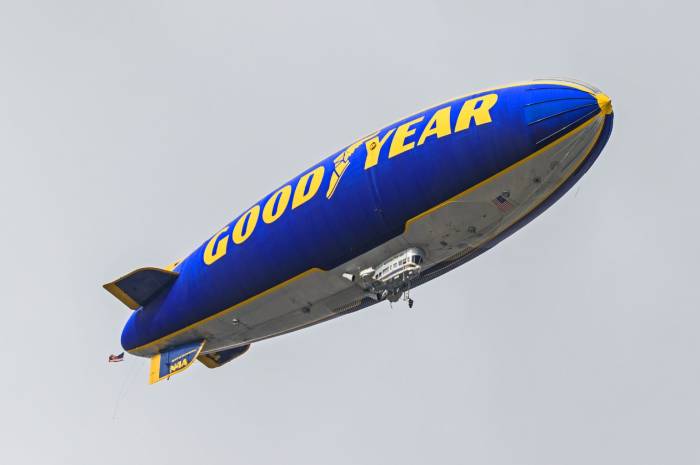Table of Contents
Despite the fact that planes and jets still fly in the sky, blimps are becoming less and less common.
The history of the blimp
The airship, or dirigible balloon, is a lighter-than-air aircraft with a lifting gas that is less dense than the surrounding air, keeping it afloat. There are three main types of airships: rigid, semi-rigid, and non-rigid. People commonly refer to non-rigid airships as blimps. In order to maintain their shape, blimps rely on internal pressure. In semi-rigid airships, the structure is also supported by a metal keel at the bottom to maintain its shape. In rigid airships, also called zeppelins, a structural framework holds the shape, and the lifting gas is contained in one or more cells. September 1852 marked the first flight of a steam-powered airship. In 1951, blimps were hailed as the future of air travel 51 years before the Wright brothers’ first flight. Other amazing inventions that have changed the world can be found here.
“Zeppelins and blimps were primarily used for military and civilian purposes, including transatlantic travel,” says Jennifer Wilnechenko, editor of Etia.com. Goodyear Tire & Rubber Company began building airships of the blimp design in 1925. During World War II, these aircraft were used for advertising and military purposes (such as surveillance and antisubmarine warfare). As time went on, aircraft and helicopters advanced in technology, becoming increasingly popular modes of transportation. After several crashes, the decline of airships was further accelerated, most notably the German airship Hindenburg, which burst into flames while landing in New Jersey in 1937, killing 35 people.
Why you rarely see airships at all anymore
Even after the Hindenburg accident, airships were still used sometimes when the ability to hover for a long period of time outweighed the need for speed and maneuverability. Currently, blimps are used for advertising, freight transportation, tourism, geological surveys, aerial observation, interdiction platforms, advertising, television coverage, tourism, and some research, says Wilnechenko. In recent years, you hardly ever see them in the sky. Another blast from the past: McDonald’s no longer offers PlayPlaces.
Because of the huge costs involved in building and operating airships, you never see them in the sky anymore. In addition to being expensive to build, they are also expensive to fly. According to Wilnechenko, airships require a large amount of helium, which can cost $100,000 per trip. Due to a global shortage of helium, the price of helium keeps rising. In addition, flying one is not an easy task. In the United States, only 128 people are qualified to fly airships, according to the Federal Aviation Administration. Only 17 of them are paid full time for their work. Learning how to fly a single-engine plane takes pilots ten to fifteen hours on average. A pilot must undergo between 250 and 400 hours of training before they can go on their first solo flight in an airship.
Drones are another reason due to their technological advancements. Aerial cameras have become more reliable over the past few years and are easier and cheaper to use. Approximately 25 blimps are still in existence today, and about half of them are still used for advertising purposes. Whenever you see a blimp floating up above you, know that it’s a rare sight. Is this another rare sight these days? The alarm clock, stereo, and DVD player in your home won’t exist in ten years.

